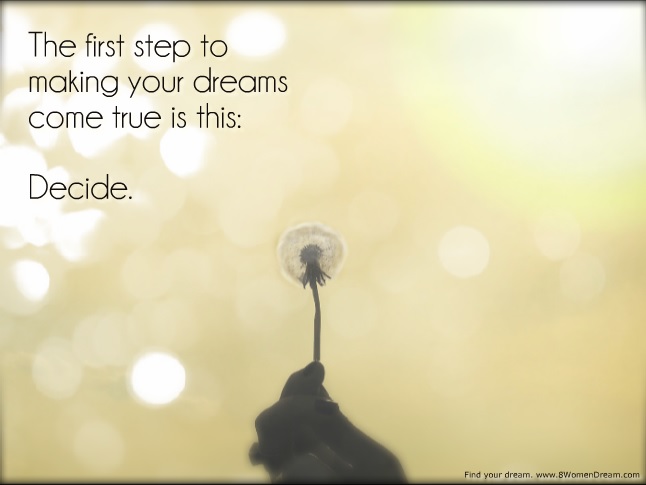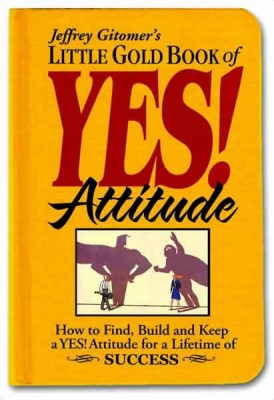 If you are like a lot of budding dreamers, you may not know what your big dream is. Or, you may be the type of person who has many big dream ideas and the thought of having to pick only one is an impossible task.
If you are like a lot of budding dreamers, you may not know what your big dream is. Or, you may be the type of person who has many big dream ideas and the thought of having to pick only one is an impossible task.
Both types of budding dreamers put off taking action toward creating a more fulfilling life. These aspiring dreamers often tell themselves, “I know I should do something else,” followed by a million reasons why they can’t (or won’t). They put themselves down for not being like “other people” who successfully achieve big dreams.
Could this be you?
“I wish I knew what my life purpose is.”
“I have so many dreams that I can’t decide!”
“It’s too difficult to know what I want to do.”
“I just don’t feel like I can change anything at this time.”
As a budding dreamer haunted by the idea of changing the direction of your life but you don’t because the idea makes you afraid–you need to think small.
I know this may sound crazy, but the easiest way to create change or learn something new is to break it down into the smallest form. Think about learning to dance. You wouldn’t begin by dancing the Tango with a stranger in public and expect to be great. You’d start small with mastering the necessary steps before moving on to more complex dance routines.
Figuring out your big dream works in the same way. You’ll want to start small and build upon what you learn about yourself as you gain mastery.
Here’s How to Figure Your Dream in 5 Small Steps –
1. Get out three sheets of paper.
2. Write 0 – 10 in the header area of one sheet, 11 – 20 in the header area the 2nd and 21 – 50 (or whatever your age is today) in the header on the third sheet.
3. Place a large T divider line on all three sheets; dividing them into two columns with the header at the top.
4. In the left column header write This Gave Me Joy and in the right column header write I Felt.
5. Make sure you won’t be disturbed and list all the things you loved doing throughout your life on the left and how they made you feel on the right.
I walk you through this exercise and more in my ebook, Find Your Dream, but I promise you if you do just the 5 steps outlined above you will become more aware of what you love and what core values resonate with you.
You will also remember what satisfies you.
For me when I do this exercise, I see the connection between what I loved playing at in my past (bike riding, hiking, dancing, arranging dollhouse furniture, ice skating, writing, playing chess, gardening) and my core values of freedom, courage, adventure, imagination, and skill. It is no shock to me that my big dream of writing content and being able to self-publish on the web lifts my spirits because it encompasses what I loved doing (change through movement) and my core values. When your dream includes both, you become highly motivated to achieve it.
Welcome the Resistance
Sometimes when you use this exercise to narrow down what your dream is, mental resistance will appear suddenly. Emotional pushback is often a sign you are on the right dream track.
Best-selling author, Steven Pressfield, puts resistance this way:
“…the more fear we feel about a specific enterprise, the more certain we can be that that enterprise is important to us and to the growth of our soul. That’s why we feel so much resistance. If it meant nothing to us, there’d be no resistance.”
Resistance is a flashlight shining on what you are being called to become.
The practice of emotional freedom techniques refers to mental resistance as “tail-enders.” They are the “Yes, buts” you think when you explore something your subconscious fears.
Resistance shows up as mental counterarguments:
“Wow. I’d like to go back to college and take a creative writing class and publish some short stores …”
The “Yes, but” or tail-enders that may show up is:
“But I don’t have the time!”
“But how will I pay for it? I don’t have the money right now!”
“But what if I don’t like it?”
“But what if I fail?”
Unfortunately, too many people listen to their resistance by giving up instead of saying to themselves:
“Even though I fear [Name Fear: I don’t have the time to go to college], I am going to [Positive Statement: make an appointment with a college counselor and talk about this fear] because I deserve this dream.”
When you think about your big dream, and you see resistance thoughts of “This is stupid!” or “I can’t do this!” coming up for you, write these thoughts down. Try to remember if these thoughts are simply fear statements others told you when you were much younger and impressionable. Maybe you have an older sibling who used to tell you that all of your ideas were “stupid.” Or maybe a parent or a teacher made you feel like you couldn’t do certain things because you “lacked talent.”
When you reflect on where your resistance statements originated, you will often see that they are opinions others had about themselves that they projected verbally on to you. They took their fears and projected them on to you.
Fear begins with an initial experience where someone you trust crushes a piece of your bold spirit. After this first painful experience, the world seems to show up to support this shame until subconsciously this fear becomes your personal truth.
Think about when you buy a new car, and suddenly you notice everyone seems to be driving the same car. The world didn’t decide to run out and buy the same car as you; it’s that you made your subconscious aware of the type of car you want and it continues to point the car out to you even though you don’t need your brain to help you find one anymore. Your thoughts and awareness are capable of sending you signals that you don’t need anymore.
It’s like a coach stating you are a terrible athlete when you are 13-years-old trying baseball for the first time, then afterward, every time you try a new sport you make all kinds of mistakes because your mind keeps reminding you of what coach said. You begin to believe that you are not athletic, so you stop trying to learn any new athletic activity. Then one day as an adult, you decide to try your hand at swimming because you are desperate to be able to swim with your kids. You sign yourself up for swim lessons with an instructor who believes his ability to teach you how to swim. Through practice and working on your mistakes without quitting, you find that you become an accomplished swimmer. You can be athletic after all. That childhood coach was wrong about you.
Counter with the positive
When you see resistance coming up, practice adding a positive counter-statement like,
“Even though [putting on a swimsuit] makes me feel [foolish], I am going to [learn to swim anyway] because I deserve my big dream to [swim in a triathlon].”
“Even though [I haven’t written anything in 20 years] and I feel like [I am a bad writer], I am going to [sign up and attend the first night of a creative writing class] because I am a good person and I deserve to take a chance on myself.”
“Even though [my family always told me that I’m terrible with money], I am going to [set aside $10.00 a month for my travel dream to Ireland and not touch the money until I have enough to take my dream trip] because I am a kind and loving person, and I am going to be kind and loving to myself.”
By acknowledging your fear in a statement and countering it with a positive reframe, you will begin to calm the subconscious fear. As you develop your big dream, don’t ignore your unconscious resistance when it appears. Instead, take it as a sign that you are on the right track. Write the resistance thought down and create a positive counter-statement.
“Even though I feel [state resistance fear], I choose [state what you are going to do for yourself and why you deserve it].”
Most importantly, trust that you do deserve your big dream because you are capable. You can figure out what it is you most want to do in this world.
Simply begin with small steps.





